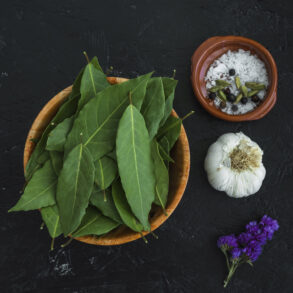The ancient science of Ayurveda presents a profound and timeless truth: the secret to vibrant skin and digestion does not lie in isolated treatments or quick fixes, but in the fundamental equilibrium of our biological intelligence.
This intelligence is expressed through the three doshas: Vata, Pitta, and Kapha, the dynamic forces that govern every physiological and psychological process in our being.
When these forces are in harmony, we experience health as radiant skin and digestion that is efficient and comfortable. When they are disturbed, we face a cascade of issues, from dull complexion and breakouts to bloating, acidity, and constipation.
Therefore, learning how to balance your doshas is not merely an ancient practice; it is the most direct and holistic path to achieving lasting wellness, manifesting as truly healthy skin and digestion.
This extensive guide will provide you with a deep, practical understanding of how to balance your doshas to transform your inner health and outer glow.
Part 1: The Inseparable Link – Why Balancing Your Doshas is the Key to Skin and Digestive Health
To understand how to balance your doshas for better skin and digestion, one must first appreciate the intrinsic connection between the two. In Ayurveda, the quality of your skin and digestion are the two most visible barometers of your internal health.
The Digestive Fire (Agni): The Cornerstone of Health
At the very center of this connection lies Agni, our digestive fire. A strong, balanced Agni is the single most important factor for good health. It is responsible for:
- Proper Digestion: It transforms the food we eat into nourishing, life-sustaining nutrients.
- Tissue Formation (Dhatu): These nutrients are sequentially processed to build and maintain all seven bodily tissues, including the final tissue, the reproductive tissue, and the one that directly reflects our health: the skin (Rasa, Rakta, Mamsa, Meda, Asthi, Majja, Shukra/Artava).
- Immunity (Ojas): A well-functioning Agni produces Ojas, the quintessential essence of immunity, vitality, and bliss, which manifests as a natural glow and resilience.
When you know how to balance your doshas, you are essentially learning how to keep your Agni perfectly kindled—neither too weak nor too strong. A balanced Agni, achieved when you successfully balance your doshas, leads to effortless skin and digestion.
The Consequence of Imbalance: The Creation of Ama (Toxins)
When your doshas are out of balance, Agni becomes impaired. This leads to the creation of Ama, a sticky, toxic by-product of improperly digested food. Ama circulates throughout the body, clogging the subtle channels (srotas).
When it lodges in the digestive tract, it leads to bloating, gas, irregular bowel movements, and a heavy feeling. When it reaches the skin, it clogs pores, leading to dullness, acne, whiteheads, blackheads, and various other inflammatory conditions.
Therefore, the entire process of learning how to balance your doshas is pivotal to protecting your Agni and preventing the formation of Ama, which is the root cause of most modern ailments related to skin and digestion.
Part 2: Deep Dive into the Doshas – Their Nature, Imbalances, and Impact on Skin and Digestion
To effectively learn how to balance your doshas, you must first learn to identify them in their balanced and imbalanced states.
Vata Dosha (Air + Ether): The Energy of Movement
- Balanced State: Creative, energetic, lively, adaptable, quick-thinking. Digestion is regular, and the skin, while naturally on the drier side, is clear and vibrant.
- Imbalanced State (Caused by cold, dry, light, rough, and mobile foods/lifestyle):
- Digestive Signs: Gas, bloating, distension, variable appetite, constipation, dry stools, malabsorption. This is a classic sign that you need to balance your doshas, starting with Vata.
- Skin Signs: Extreme dryness, flakiness, cracking, a feeling of tightness, premature wrinkles and fine lines, dull and ashy complexion, uneven skin tone due to variable circulation. Correcting this requires a targeted strategy to balance your doshas.
Primary Goal to Balance Your Doshas (Vata): To ground, warm, hydrate, and nourish the system. This is the foundational approach for those learning how to balance your doshas when Vata is aggravated.
Pitta Dosha (Fire + Water): The Energy of Transformation
- Balanced State: Sharp intellect, strong leadership, courage, a warm body temperature, and a glowing complexion. Digestion is strong and efficient.
- Imbalanced State (Caused by hot, sharp, oily, acidic, and intense foods/lifestyle):
- Digestive Signs: Heartburn, acid reflux, hyperacidity, a burning sensation in the stomach, loose stools, excessive hunger or thirst, inflammation in the gut. This intense heat signals an urgent need to balance your doshas, specifically Pitta.
- Skin Signs: Inflammation, redness, rosacea, acne (often pustular), rashes, hives, allergic reactions, excessive oiliness, a tendency to sunburn easily, and hyperpigmentation. Managing this requires a careful plan to balance your doshas and cool the internal fire.
Primary Goal to Balance Your Doshas (Pitta): To cool, calm, and soothe the system. Understanding this is crucial for anyone seeking to balance your doshas where Pitta is the primary agitator.
Kapha Dosha (Earth + Water): The Energy of Structure & Lubrication
- Balanced State: Strong, calm, loving, grounded, with great stamina and stable energy. Digestion is steady, and the skin is naturally thick, soft, and well-lubricated.
- Imbalanced State (Caused by heavy, cold, oily, sweet, and dense foods/lifestyle):
- Digestive Signs: Sluggish digestion, slow metabolism, feeling heavy after meals, excessive mucus production, water retention, weight gain, lethargy. This stagnation indicates a core requirement to balance your doshas by stimulating Kapha.
- Skin Signs: Excessive oiliness, enlarged pores, cystic acne, blackheads, congestion, puffiness (especially in the face), a pale and dull complexion, and slow healing of blemishes. Addressing this is key when you work to balance your doshas affected by Kapha’s stagnant qualities.
Primary Goal to Balance Your Doshas (Kapha): To stimulate, lighten, warm, and detoxify the system. This energetic approach is essential to effectively balance your doshas when Kapha accumulation is the issue.
Part 3: The Master Plan – Practical Strategies on How to Balance Your Doshas for Better Skin and Digestion
This is the core of the guide: the actionable, daily practices that will teach you exactly how to balance your doshas in a sustainable way.
This is the core of the guide: the actionable, daily practices that will teach you exactly how to balance your doshas in a sustainable way.
Dietary Guidelines: You Are What You Digest
The most powerful tool to balance your doshas is the food you eat every day.
To Balance Your Doshas (Vata):
- Qualities to Favor: Warm, moist, oily, heavy, and smooth. Think cooked, unctuous foods.
- Best Foods: Warm stews, soups, oatmeal, ripe bananas, avocados, nuts, seeds, well-cooked vegetables, healthy fats like ghee and olive oil, and sweet, sour, and salty tastes.
- Foods to Minimize: Cold, dry, light, and rough foods like raw salads, crackers, dried fruits, and excessive bitter and astringent tastes.
- Key for Digestion: Always eat in a calm environment and favor warm meals. This is a simple but profound first step to balance your doshas.
To Balance Your Doshas (Pitta):
- Qualities to Favor: Cool, dry, heavy, and dense. Favor sweet, bitter, and astringent tastes.
- Best Foods: Sweet fruits (grapes, melons, mangoes), cooked greens, cucumber, coconut, ghee, and cooling spices like fennel, coriander, and mint.
- Foods to Minimize: Hot, spicy, oily, and acidic foods like chili peppers, fried food, fermented foods, sour citrus, and excessive salty and pungent tastes.
- Key for Digestion: Avoid eating when angry or stressed. This emotional regulation is a critical part of the process to balance your doshas.
To Balance Your Doshas (Kapha):
- Qualities to Favor: Light, dry, warm, and rough. Favor pungent, bitter, and astringent tastes.
- Best Foods: Lightly cooked vegetables, apples, pears, legumes, minimal oil, and stimulating spices like ginger, black pepper, and turmeric.
- Foods to Minimize: Heavy, cold, oily, and sweet foods like dairy, wheat, processed sugars, fried foods, and excessive sweet, sour, and salty tastes.
- Key for Digestion: Allow at least 3-4 hours between meals and avoid snacking to let Agni fully process each meal. This discipline is essential to balance your doshas of a Kapha nature.
Lifestyle & Routine (Dinacharya): The Rhythm of Health
A consistent daily routine is perhaps the most powerful medicine to balance your doshas, especially for the erratic Vata.
A consistent daily routine is perhaps the most powerful medicine to balance your doshas, especially for the erratic Vata.
1. Wake Up with the Sun: Rising before sunrise (during the Vata time of day) helps to establish a calm, grounded rhythm for the day, which is the first step to balance your doshas naturally.
2. Oral Hygiene (Kavala & Gandusha): Oil pulling with sesame oil (for Vata/Kapha) or coconut oil (for Pitta) helps to remove toxins from the mouth, improving oral health and indirectly supporting the entire digestive tract. This is a key practice for those learning how to balance your doshas through detoxification.
3. Abhyanga (Self Oil Massage): This is a non-negotiable practice to balance your doshas. Massaging the body with warm, dosha-specific oil (sesame for Vata, coconut for Pitta, sunflower for Kapha) calms the nervous system, lubricates the skin, and moves toxins towards the digestive tract for elimination. It profoundly benefits both skin and digestion.
4. Exercise (Vyayama): Tailor your movement to your constitution to balance your doshas.
- Vata: Gentle, grounding exercises like slow-flow yoga, walking in nature, swimming, and Tai Chi.
- Pitta: Moderate, cooling exercises like swimming, moon salutations, and hiking in nature, avoiding competitive exertion in the midday heat.
- Kapha: Vigorous, stimulating exercises like running, vigorous vinyasa yoga, strength training, and dancing.
5. Pranayama (Breathing Exercises):
- Nadi Shodhana (Alternate Nostril Breathing): This is the ultimate technique to balance your doshas as it harmonizes the left and right energy channels (Ida and Pingala), bringing equilibrium to the entire system.
- Sheetali (Cooling Breath): Excellent for Pitta to cool the body and mind.
- Kapalabhati (Skull Shining Breath): A stimulating breath to energize Kapha and stoke Agni.
Herbal Support (Dravyaguna)
Herbs can provide targeted support while you learn how to balance your doshas through diet and lifestyle.
- For Vata: Ashwagandha (grounding), Shatavari (nourishing), Triphala (gentle cleansing for the gut).
- For Pitta: Amalaki (cooling rejuvenator), Shatavari (cooling), Guduchi (blood purifier), Neem (bitter coolant).
- For Kapha: Ginger (to ignite Agni), Turmeric (anti-inflammatory), Trikatu (a blend of ginger, black pepper, and long pepper to stimulate digestion).
Part 4: A Sample Daily Routine to Balance Your Doshas
Here is a glimpse of what a day looks like when you actively work to balance your doshas.
Morning:
- 6:00 AM: Wake up, drink a glass of warm water with a squeeze of lemon to gently awaken Agni.
- 6:15 AM: Perform 5-10 minutes of Nadi Shodhana pranayama.
- 6:30 AM: Perform Abhyanga with your dosha-specific oil, followed by a warm shower.
- 7:30 AM: Eat a warm, cooked breakfast suitable for your dosha (e.g., oatmeal for Vata, coconut yogurt for Pitta, a light apple stew for Kapha).
Mid-Day:
- 12:00 PM: Eat your largest meal of the day, when Agni is at its peak. Sit down to eat without distractions, chewing thoroughly.
- Take a short, gentle walk after lunch to aid digestion.
Evening:
- 6:00 PM: A light, early dinner.
- 8:00 PM: Wind down. Avoid screens. You might do some gentle stretching or journaling.
- 9:30 – 10:30 PM: Be in bed, aiming for 7-8 hours of quality sleep.
Conclusion: The Journey to Lifelong Balance
Learning how to balance your doshas is a journey of self-awareness and self-care.
It is not about achieving a perfect, static state but about learning to flow with the rhythms of nature, the seasons, and your own life.
It is a compassionate dialogue with your body. When you commit to the practices that balance your doshas, you are investing in the very root of your well-being.
The reward is a life of vitality, mental clarity, and the profound, visible health that is reflected in harmonious skin and digestion.
This is the ultimate gift of Ayurveda: the knowledge and the power to become the primary healer in your own life, mastering the art of how to balance your doshas for a radiant, healthy, and fulfilling existence.
In conclusion, embracing the practices to balance your doshas can lead to a lifestyle enriched with vitality, clarity, and well-being.










